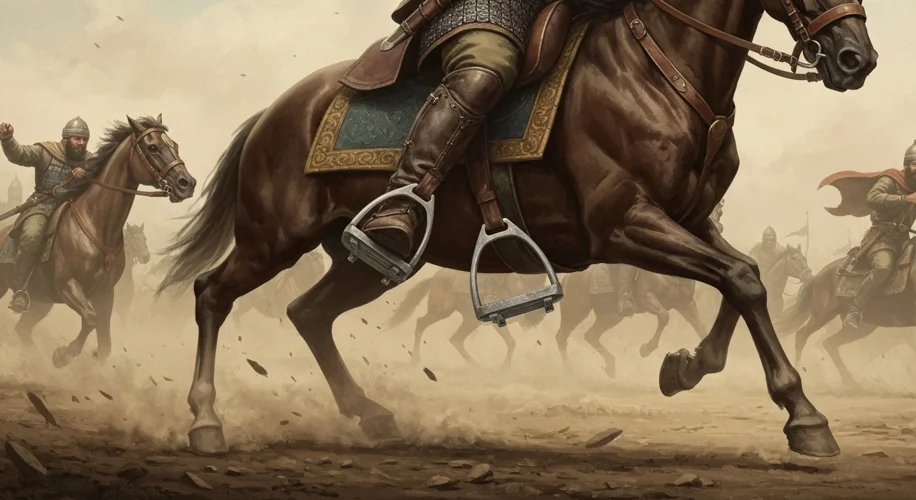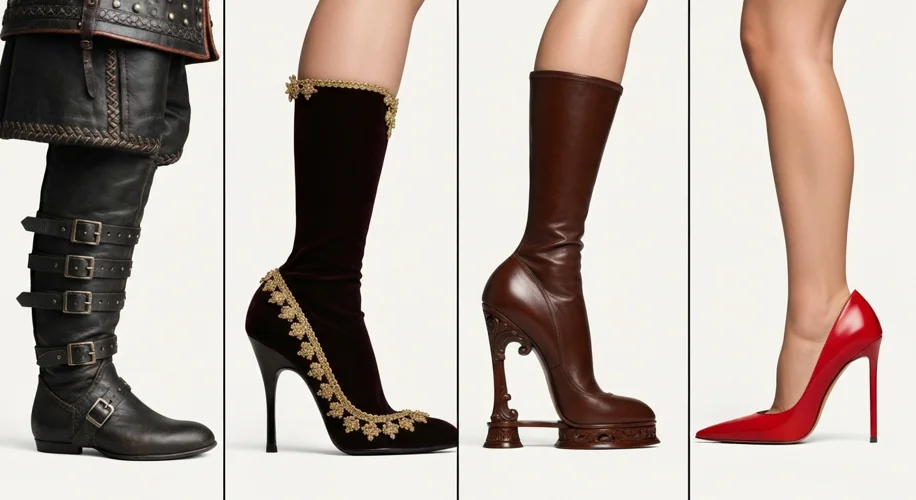For centuries, footwear has been more than just protection for our feet; it has been a statement, a status symbol, and even a tool. Among the most enduring and intriguing of these is the high heel. Its journey is a fascinating saga, a tale that begins not on the runway, but on the battlefield, and evolves into a complex symbol of fashion, power, and gender.
Our story starts not in the glittering salons of Versailles, but in the rugged plains of ancient Persia, around the 10th century CE. Persian horsemen, skilled warriors and riders, adopted a practical innovation: a heel on their boots. This elevated heel provided a crucial advantage, helping their feet stay securely in the stirrups during combat. Imagine the scene: cavalry charging, their specialized boots gripping the metal, giving them stability and leverage as they launched arrows or wielded swords. These early heels were functional, a testament to military necessity.

From these military origins, the high heel began its slow, transformative march towards wider adoption. By the 17th century, the trend had crossed continents and genders. European aristocrats, ever keen to emulate and distinguish themselves, embraced the high heel. In courts like that of King Louis XIV of France, who famously stood at a mere 5’4″, heels became a height-boosting tool for men, a way to project an image of authority and grandeur. The Sun King himself was often depicted in striking red-heeled shoes, a clear marker of his royal status. These heels were not merely functional; they were a visual declaration of power and exclusivity.
The fashion began to diverge more distinctly along gender lines in the late 17th and early 18th centuries. As men’s fashion shifted towards more subdued attire, women’s fashion embraced the flamboyant. High heels, with their ability to alter posture, accentuate the calf, and add an air of delicate femininity, became increasingly associated with women. The curve of the heel, the pointed toe, the delicate materials – all contributed to an aesthetic that celebrated a certain ideal of womanhood, one that was perhaps less about physical prowess and more about visual appeal and social standing.
This gendered evolution continued through the centuries. In the Victorian era, heels remained popular, often embodying the era’s emphasis on modesty and domesticity, paradoxically conveyed through the subtle, yet significant, elevation of the foot. As the 20th century dawned, the high heel became a staple of modern fashion, evolving with changing silhouettes and societal norms.
The mid-20th century saw the rise of the stiletto heel, a daringly thin and impossibly high creation that became synonymous with glamour, confidence, and a certain rebellious spirit. Designers like Roger Vivier and Salvatore Ferragamo pushed the boundaries of what was possible, creating iconic styles that graced the feet of Hollywood stars and fashion icons. These weren’t just shoes; they were sculptures, expressions of artistry and aspiration.

However, the high heel’s journey is not without its controversies. Throughout history, its very design has been debated. Some saw it as a symbol of liberation and empowerment, allowing women to command attention and exude confidence. Others viewed it as a tool of oppression, a physical constraint that hobbled women and reinforced patriarchal beauty standards. The very act of walking in high heels requires a different gait, a slight sway of the hips that has, over time, been coded as feminine.
In the late 20th and early 21st centuries, the conversation around high heels has become even more nuanced. Feminist critiques have questioned their role in perpetuating objectification and discomfort. Yet, for many, they remain a powerful form of self-expression, a way to feel taller, more poised, and more in control. The cultural significance of the high heel continues to be redefined, reflecting ongoing shifts in our understanding of gender, power, and identity.
From the battle-hardened Persian horseman to the powerful queens of ancient courts, and from the daring flappers of the 1920s to the modern fashionista, the high heel has walked a remarkable path. It’s a testament to how an object, born of practical necessity, can be reshaped by culture, gender, and aspiration into a potent symbol that continues to elevate, and sometimes challenge, our perceptions.

